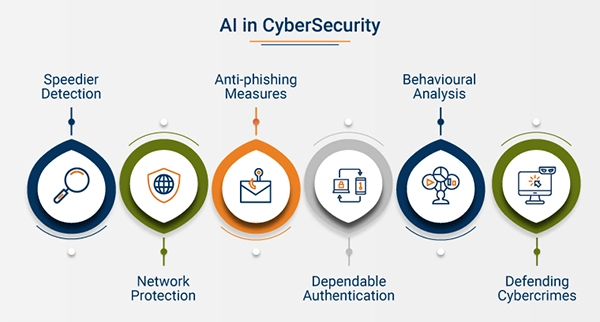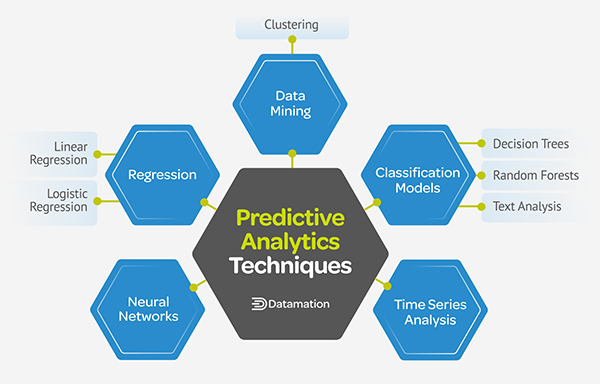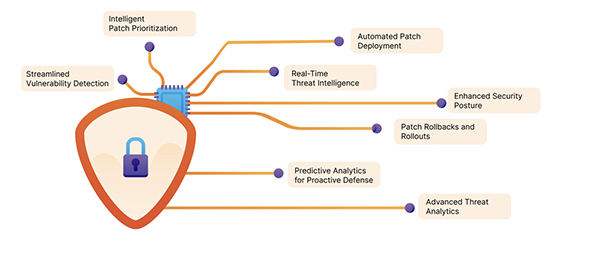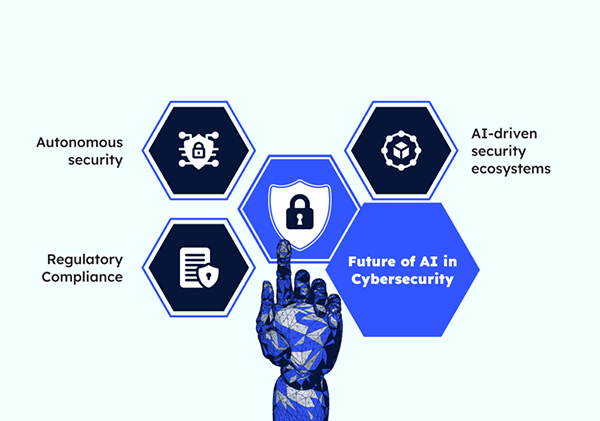in the ever-evolving field of technology, artificial intelligence is emerging as a double-edged sword that is not only revolutionizing the industry but also going a long way in simplifying our lives.
But the unfortunate thing here is that it is also opening some new avenues for cybercriminals to exploit. And, as AI-powered tools are getting extremely sophisticated, so is the threat they pose to our digital security.
In fact, it is becoming so concerning that 2023 alone saw a 72% increase in data breaches since 2021, which previously held an all-time record.
So, in this read, we will dive into the complex interplay between AI and cybersecurity, exploring the potential dangers and the innovative solutions that are being developed to combat them.
Let’s start!
The Role of AI in Enhancing Cybersecurity

In today’s rapidly evolving digital environment, AI is essential for robust cybersecurity solutions. AI-driven tools analyze vast amounts of data in real-time, identifying anomalies and potential risks far more efficiently than traditional systems.
This capability is crucial, given the ever-increasing sophistication of cyberattacks. AI’s ability to predict and prevent attacks based on historical data and pattern recognition is reshaping how tech security is approached.
For professionals entering this field, specializing in AI-driven security approaches is increasingly advantageous. Pursuing a cybersecurity degree concentration is one pathway that provides foundational knowledge in tech security while allowing a deeper focus on AI applications.
Such concentrations equip individuals with essential skills for tackling threats in sectors ranging from finance to healthcare.
As cybersecurity professionals work to integrate AI into their security strategies, they also need to stay informed on AI’s potential vulnerabilities to maintain robust security frameworks.
Predictive Analytics: Staying Ahead of Cyber Threats

Predictive analytics in AI has become a powerful tool for identifying and addressing cyber threats before they manifest. By analyzing historical and real-time data, AI algorithms can detect patterns that might indicate potential breaches or weaknesses. This capability is crucial for organizations looking to protect sensitive data from constantly evolving threats.
Predictive analytics not only spots suspicious activity but also allows for dynamic responses. For instance, in sectors that handle high-value data, like banking and healthcare, predictive AI algorithms monitor systems continuously, ensuring that suspicious activities are flagged and analyzed immediately.
This type of predictive technology is increasingly integrated into software solutions, allowing tech teams to simulate and visualize potential attack scenarios, thus preparing for various forms of cybersecurity risks.
Implementing predictive AI technology, however, requires significant investment in both software and expertise. Organizations are increasingly prioritizing AI knowledge among their tech teams, with many professionals focusing on AI-enhanced security methods to create effective, proactive responses. As predictive analytics continues to evolve, it will remain integral to staying ahead in the cybersecurity arena.
AI-Driven Threat Detection and Response

AI has revolutionized threat detection, particularly through machine learning algorithms that continuously adapt and refine their understanding of normal network behaviour. Machine learning can quickly identify deviations from expected activity, enabling quicker responses to suspicious behaviours and potential threats. For example, unusual login locations, unexpected data transfers, and irregular access times can all be flagged by AI-driven monitoring systems.
One of the key advantages of AI-based threat detection is its ability to minimize response times. Traditional security systems often rely on rule-based alerts, which can miss novel attack methods or generate false alarms. AI, in contrast, can discern subtle differences in data, giving it the ability to detect zero-day attacks—threats that exploit unknown vulnerabilities—much earlier than standard systems.
Despite its potential, however, AI-driven threat detection is not without challenges. Since AI systems are based on vast data inputs, they are as susceptible to data-based attacks as any other system. Adversarial machine learning, for instance, is a method used by attackers to manipulate AI into misidentifying threats. As a result, cybersecurity experts must approach AI-based threat detection with a focus on both maximizing its detection capabilities and minimizing its vulnerabilities to adversarial attacks.
Managing AI Vulnerabilities in Tech Security

While AI is a powerful tool for cybersecurity, it also brings new vulnerabilities that tech security teams must address. AI systems are only as strong as the data they learn from, which means that poor data quality or biased datasets can compromise their effectiveness. Furthermore, AI algorithms can be exploited by malicious actors who understand the models and can manipulate data to trick AI into making incorrect decisions.
To counter these risks, tech security teams are working to develop resilient AI models that can withstand attempts at data manipulation. For instance, some teams are implementing multifactor analysis, where the AI cross-references multiple datasets to verify its findings.
Additionally, there’s a growing emphasis on ‘explainable AI,’ which enables cybersecurity professionals to understand how AI reaches its conclusions, making it easier to identify and rectify vulnerabilities.
Moreover, regulatory bodies are beginning to set standards for AI in cybersecurity, ensuring that organizations use AI responsibly and ethically. This includes maintaining transparency in AI operations and securing user data through strict privacy protocols. By addressing AI vulnerabilities proactively, tech security can effectively leverage AI while minimizing the associated risks.
Future Challenges and Innovations in AI-Driven Security

As AI technology continues to evolve, so do the methods employed by cybercriminals. Future challenges in AI-driven security will likely include more advanced forms of AI-enabled attacks, such as automated phishing schemes and highly personalized malware. These threats will necessitate innovative countermeasures, including enhanced machine-learning algorithms that are capable of quickly adapting to new attack techniques.
Additionally, there is an ongoing discussion around AI ethics in cybersecurity, especially concerning privacy and data security. With AI’s potential to process vast amounts of personal data, ensuring privacy protection becomes paramount. Innovations in data anonymization and decentralized data storage are emerging as solutions to balance AI’s capabilities with user privacy.
The future of AI-driven cybersecurity also points towards the rise of collaborative security frameworks. Companies across sectors are recognizing the importance of shared intelligence, where threat information is pooled to create a more comprehensive picture of the threat landscape. Such collaborations can enable tech security teams to stay one step ahead of emerging threats, leveraging AI-powered insights across industries.
All in all, AI in tech security represents both an opportunity and a challenge for today’s cybersecurity professionals. While businesses in Cleveland levarage AI that enhances threat detection, response times, and predictive capabilities, it also introduces new vulnerabilities that require careful management best achieved with guidance of a managed IT services in Cleveland.
As AI continues to become more integrated into tech security strategies, professionals with advanced education and expertise in AI applications are well-positioned to drive forward innovative, resilient solutions.






